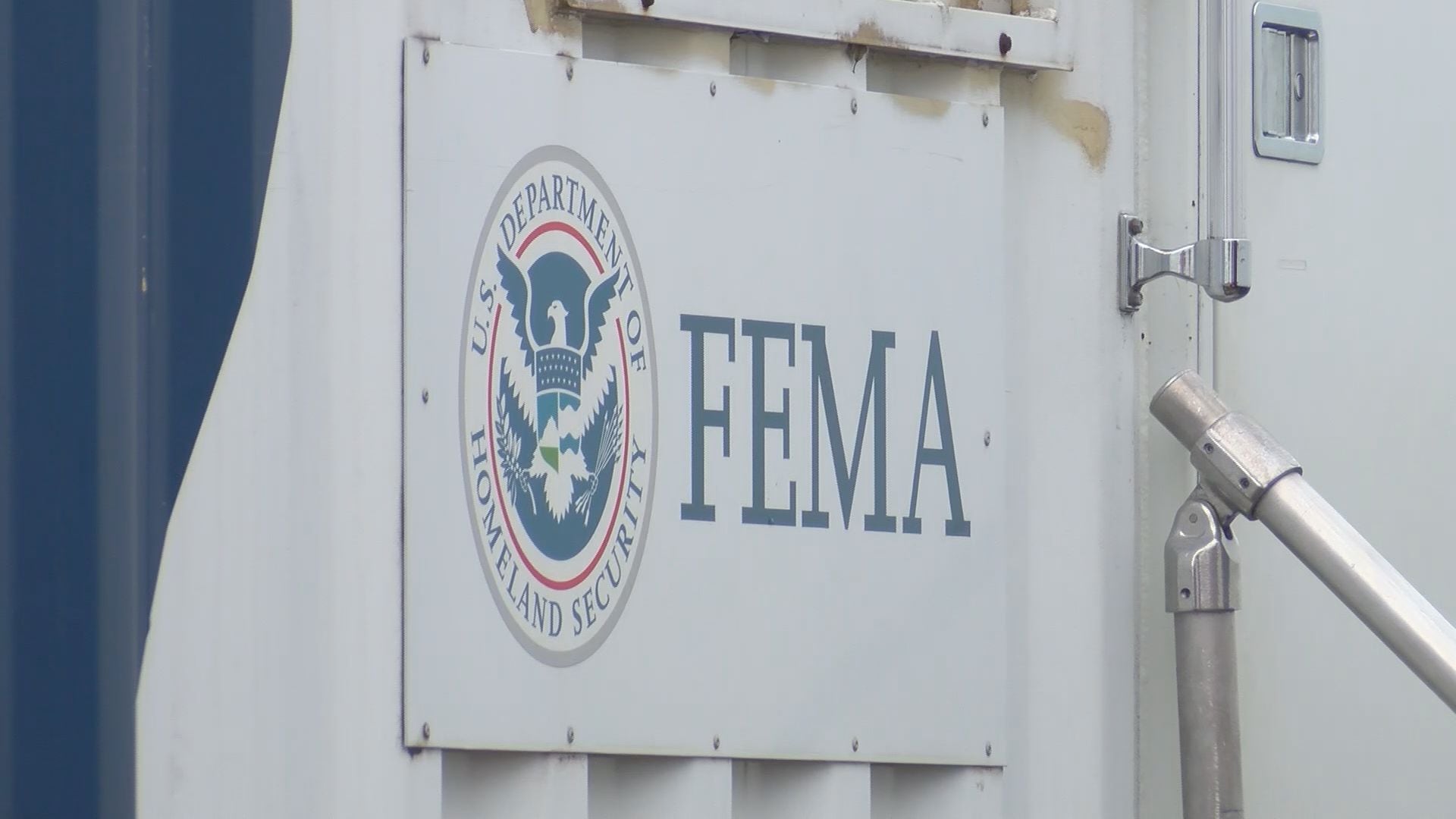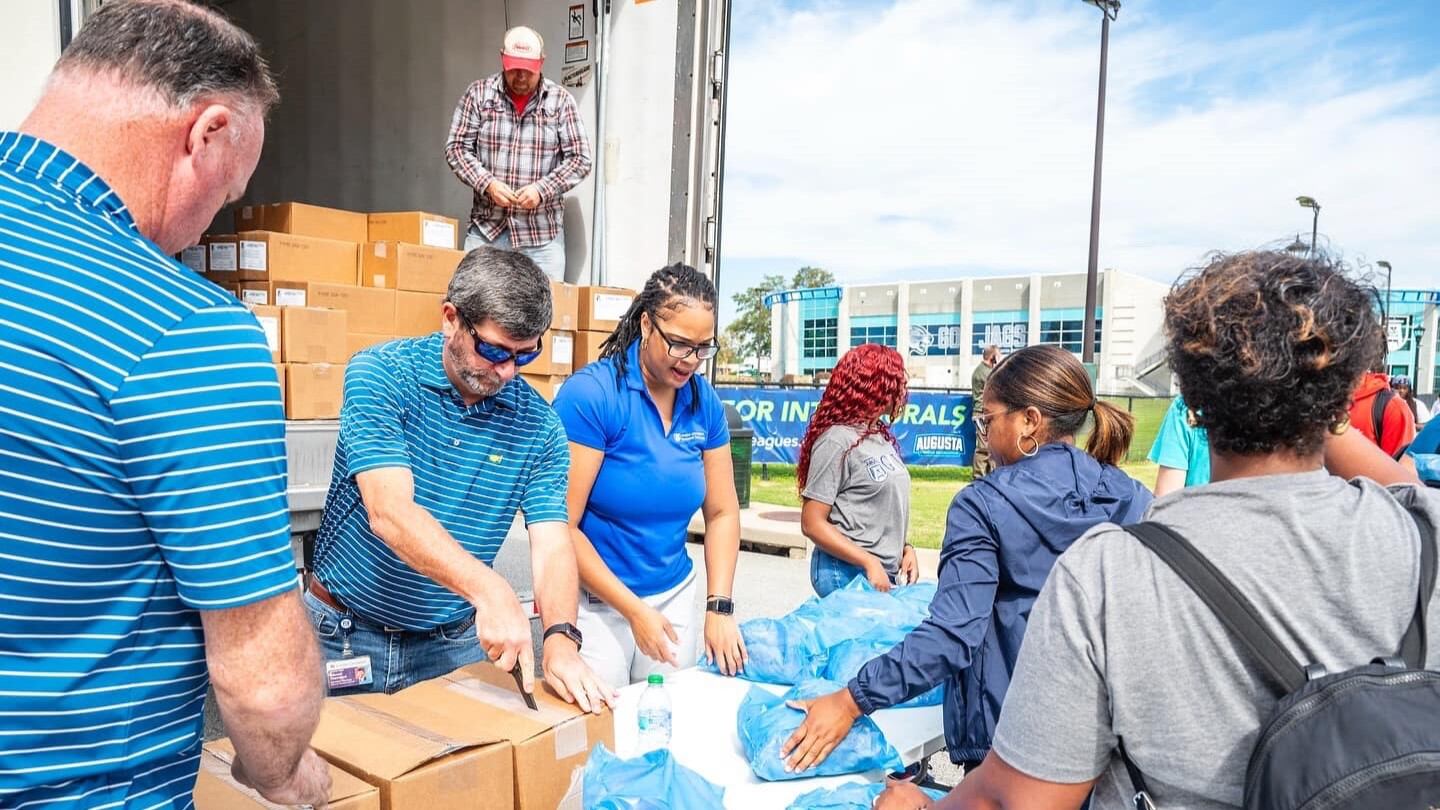How Moscow is using Hurricane Helene to manipulate U.S. voters
- Explaining FEMA: What the agency can and can’t do for Helene victims
- Fact vs. fiction: A look at the false information around Hurricane Helene
- FEMA aid: Local renters can apply for assistance after Hurricane Helene
- Applying for aid: Assistance won’t affect other benefits, agency says
WASHINGTON - New research shows Russia has worked to amplify false and misleading claims about the U.S. government’s response to Hurricanes Helene and Milton as part of the Kremlin’s efforts to manipulate Americans before the Nov. 5 election.
The research comes from the London-based Institute for Strategic Dialogue. Researchers found that posts linked to Russian state media and online s spread English-language content that was designed to reduce American confidence in the federal response to the storms.
It’s an approach consistent with past Russian disinformation campaigns.
Everything you need to know about applying for FEMA aid
This is the first time people around here have had to deal with FEMA, and it can be confusing. Find out what you need to know.

The content, spread by Russian state media and networks of social media s and websites, criticizes the federal response to Hurricanes Helene and Milton, exploiting legitimate concerns about the recovery effort in an attempt to paint American leaders as incompetent and corrupt, according to research from the Institute for Strategic Dialogue. The London-based organization tracks disinformation and online extremism.
In some cases, the claims about the storms include fake images created using artificial intelligence, such as a photo depicting scenes of devastating flooding at Disney World that never happened, researchers say.
IN THE CSRA:
- Deanne Criswell, the director of FEMA, addressed the misinformation during a visit to Augusta on Wednesday. “It created unnecessary noise in the work that needs to be done. Our focus should be on the people,” she said. “I want to make sure my staff can put all of their time and energy into helping them on their road to recovery.”
The approach is consistent with the Kremlin’s long-standing practice of identifying legitimate debates and contentious issues in the U.S. and then exploiting them. Previous disinformation campaigns have harnessed debates about immigration, racism, crime and the economy in an effort to portray the U.S. as corrupt, violent and unjust.
U.S. intelligence officials and private tech companies say Russian activity has increased sharply before the Nov. 5 election as Moscow tries to capitalize on an opportunity to undermine its chief global adversary.
By seizing on real concerns about disaster recovery, Russia’s disinformation agencies can worm their way into U.S. discourse, using hot-button issues to undermine Americans’ trust in their government and each other.
I-TEAM: Helene has displaced students at nearly every Richmond County school
The Richmond County School System has been using an online form to identify students and their immediate needs, in order to connect parents with local resources.

“These are not situations that foreign actors are creating,” said Melanie Smith, director of research at ISD. “They’re simply pouring gasoline on fires that already exist.”
The content identified by ISD included English-language posts obviously meant for Americans, as well as Russian-language propaganda intended for domestic audiences. Much of the disinformation took aim at the Federal Emergency Management Agency and the Democratic istration of President Joe Biden and Vice President Kamala Harris. She is her party’s nominee in the White House race against former President Donald Trump.
Russia’s invasion of Ukraine remains the Kremlin’s prime motivation for spreading lies about the hurricane response. If Russia can persuade enough Americans to oppose U.S. for Ukraine, that could ease the way for a Moscow victory, officials and analysts have said.
U.S. intelligence officials have said Russia’s disinformation seems designed to Trump, who has praised Russian President Vladimir Putin and disparaged the NATO alliance and Ukraine’s leaders. Posts linked to Russia routinely denigrate Harris, saying she is ignoring the pleas of storm victims. By contrast, a recent post from Russian state media company RT called Trump “a mystical figure of historic proportions.”
Intelligence officials confirmed Tuesday that Russia created a manipulated video to smear Harris’ running mate, Minnesota Gov. Tim Walz.
Additional evidence
Foreign adversaries have shown continued determination to influence the U.S. election –- and there are signs their activity will intensify as Election Day nears, Microsoft said in a separate report Wednesday.
Russian operatives are doubling down on fake videos to smear Vice President Kamala Harris’ campaign, while Chinese-linked social media campaigns are maligning down-ballot Republicans who are critical of China, the company’s threat intelligence arm said Wednesday.
Meanwhile, Iranian actors who allegedly sent emails aimed at intimidating U.S. voters in 2020 have been surveying election-related websites and major media outlets, raising concerns they could be preparing for another scheme this year, the tech giant said.
The report serves as a warning – building on others from U.S. intelligence officials – that as the nation enters this critical final stretch and begins counting ballots, the worst influence efforts may be yet to come. U.S. officials say they remain confident that election infrastructure is secure enough to withstand any attacks from American adversaries. Still, in a tight election, foreign efforts to influence voters are raising concern.
Microsoft noted that some of the disinformation campaigns it tracks received little authentic engagement from U.S. audiences, but others have been amplified by unwitting Americans, exposing thousands to foreign propaganda in the final weeks of voting.
Local animal shelters continue to see increase in overcrowding
Local animal shelters were dealing with overcrowding before the storm nearly a month ago, and they’re still dealing with it now.

Researchers at ISD found that Russian disinformation agents exploited weak content moderation on U.S.-owned social media platforms such as X to spread their content far and wide. Before it was purchased and renamed by Elon Musk, the platform once known as Twitter required labels on content from authoritarian state media. Musk rescinded that rule and gutted the platform’s content moderation efforts, leading to a surge in foreign propaganda, hate speech and extremist recruitment.
Often the false or misleading claims come from fake s or websites that mimic Americans or legitimate news outlets, making it difficult to determine their true origin. Unsuspecting Americans then repost and spread the content.
In July, American intelligence officials warned that “unwitting Americans” were helping do Russia’s work for it.
Vast armies of fake or automated s help spread the material further.
SRS, food manufacturer come through with donations after Helene
Donated MREs and breaded chicken strips helped keep the CSRA fed as the community responded to the destruction of Hurricane Helene.

Researchers at the Israeli tech firm Cyabra analyzed popular posts on X that criticized FEMA for its storm response. A significant number could not be verified as belonging to a real person; one-quarter of all the responses to popular posts were deemed fake. The posts were seen by s over half a billion times.
In response, a spokesperson for X pointed to the platform’s system that allows s to add context to posts with false claims. The company did not respond to questions about its labeling policy.
“The false claims, ranging from FEMA diverting funds to aid migrants to conspiracy theories about weather manipulation, undermine public trust in government as we near election day, which could seriously impact voter confidence,” Cyabra researchers said in a report.
Politicians also have helped spread Russia’s talking points.
Rep. Paul Gosar, R-Ariz., gave an interview to the Russian state media outlet Sputnik News for a piece that played up criticism of the hurricane response. He told Sputnik that the federal response was “nonexistent,” a claim easily debunked by photos and videos of FEMA recovery workers as well as the firsthand s of local leaders and residents in hard-hit regions.
SEE FEMA NEWS CONFERENCE IN AUGUSTA:
Gosar repeated another misleading claim that “billions of FEMA disaster funds” had been given instead to immigrants without legal status. In truth, money that funds U.S. border control and immigration programs comes from a different source than disaster funds.
Gosar’s office did not respond to messages seeking comment Wednesday.
By the numbers
- FEMA has approved over $2 billion in federal assistance for individuals and communities affected by Hurricanes Helene and Milton.
- FEMA has over 5,000 personnel deployed throughout the Southeast, contributing to a total of over 6,000 federal responders who are working together to state and local governments in their recovery efforts.
- Federal assistance for those affected by the hurricanes includes $940 million to survivors with housing repairs, personal property replacement and other essential recovery efforts.
- Additionally, over $1.1 billion has been approved for debris removal and emergency protective measures, which are necessary to save lives, protect public health and prevent further damage to public and private property.
- In Georgia, FEMA has approved over $156 million in housing and other types of assistance for more than 141,000 households.
- In South Carolina, FEMA has approved over $166 million in housing and other types of assistance for more than 176,000 households.
Copyright 2024 WRDW/WAGT. All rights reserved.















